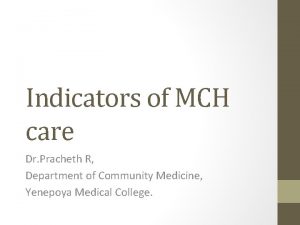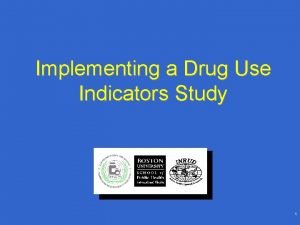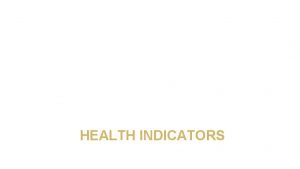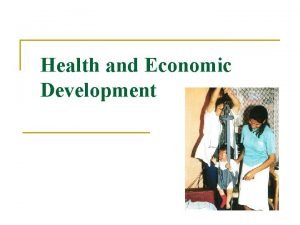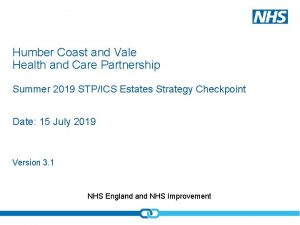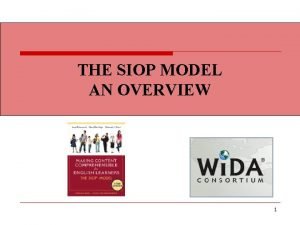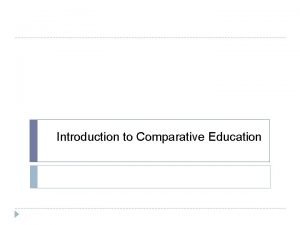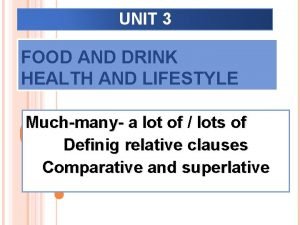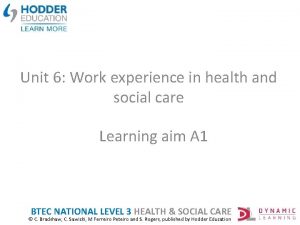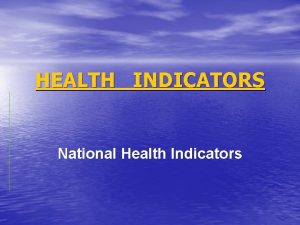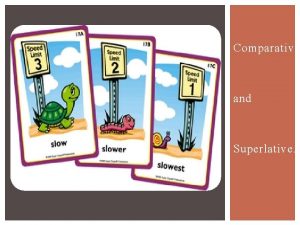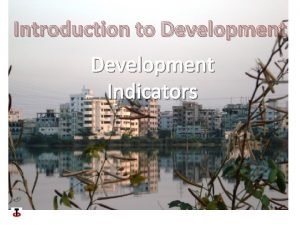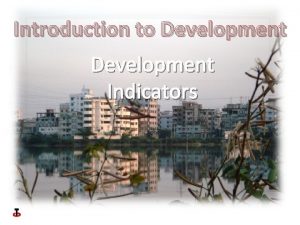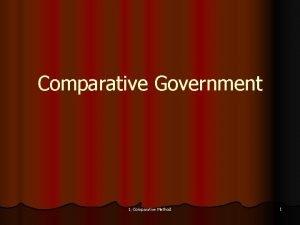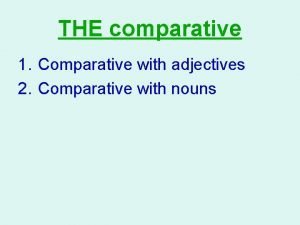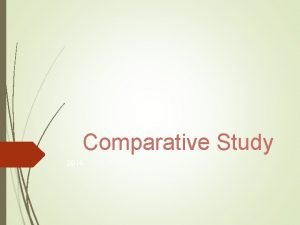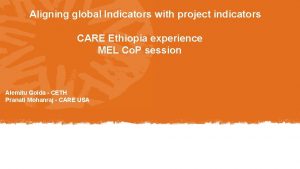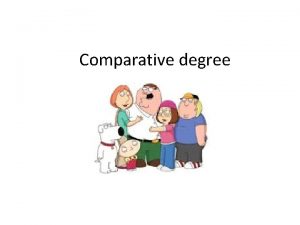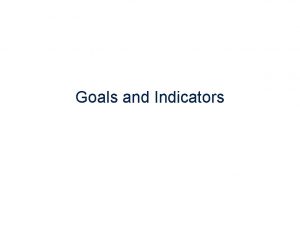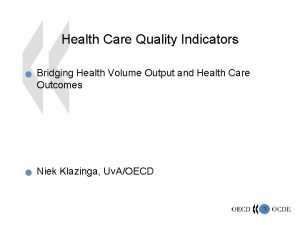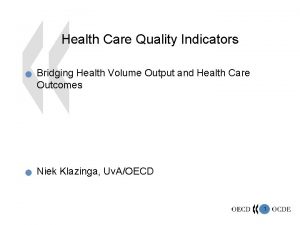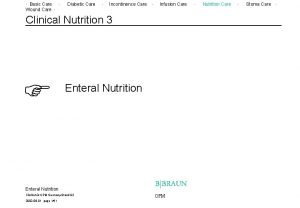Comparative Indicators of Health and Health Care Use


























- Slides: 26

Comparative Indicators of Health and Health Care Use for Manitoba’s Regional Health Authorities: A POPULIS Report Rural and Northern Health Care Meeting November 1, 1999 SESSION II: KEY CONCEPTS Speaker: Patricia Martens Ph. D Manitoba Centre for Health Policy and Evaluation Department of Community Health Sciences, University of Manitoba

Getting a “gut feel” • Age structure? • Major disease concerns? • Need, physicians, acute care, long term care?

Fill out the “profile” for later use.

Baseline information • 1996/1997 data compares inter-regionally and within each region • baseline for comparing impact of RHA Board initiatives

The people of your region • Population pyramids: age and gender pictures

Age Structure of Manitoba Population 1, 136, 249 Years Females Males 100+ 90 -94 Treaty Indians 80 -84 All Others 70 -74 60 -64 50 -54 40 -44 30 -34 20 -24 10 -14 0 -4 -8% -6% -4% -2% 0% 2% 4% 6% 8%

Age Structure

1995/96 Population By Age (page 129 of the document)

The geography of your region • Subdivisions … what’s a PSA? – Physician service area (see page 135 for list and associated RMs) – typically consist of towns in which physicians practice, plus smaller nearby communities and districts whose residents seek care from these physicians


The healthiness of your region • PMR = premature mortality rate • SERI = socio-economic risk index • life expectancy

PMR (page 70 -71 of document) • best single indicator of health status capturing the need for health care • associated with self-reported health • high PMR … more likely to report … – poor health – higher number of symptoms – being sick more often • death before the age of 75, ie, “premature”

So what’s the meaning of * • “statistically significantly different” • number of people in RHA or PSA may cause year-to-year fluctuations • * = a similar difference would probably be seen from one year to the next

Premature Mortality Rates by RHA * * * South Eastman South Westman Brandon Most healthy Central Marquette Parkland Winnipeg North Eastman Interlake Least ? healthy * * Burntwood Norman Churchill Manitoba 0 1 2 3 4 5 Death rate per 1, 000 population 0 -74 years 6 7

SERI (page 68 -69) • Composite index of 6 measures (from 23) – environmental, household, individual conditions (employment rates, single parent families, educational achievement, household dwelling value, participation of females in labour force) – risk for poor health – associated with higher need for health care

Socio-Economic Risk Index North Eastman lower risk Springfield higher risk East Lake Winnipeg -0. 5 0 0. 5 Manitoba average 1 1. 5 2

Disease profiles/procedures • Adjusted rates: – disease burden: diabetes, hypertension, cancer – high profile procedures: cardiac catheterizations, coronary artery bypass surgery, angioplasty, hip and knee replacements, cataract surgery, prostatectomy – discretionary procedures: tonsillectomy, hysterectomy, caesarian section rates • Crude rates (one age bracket): – immunization, screening mammography

*Which population is “sicker” … A or B? *What is a fair comparison? A 50 150 300 B 200 3 sick Crude rate: 250 10 sick 500 28 per 1000 10 sick 5 sick 300 250 28 per 1000 15 sick 3 sick 0 sick

Adjusted vs. crude rates (cont’d) A 3 sick 10 sick 50 150 300 500 Crude rate: B (6%) = 12 of the 200 (6. 7%) = 16. 7 of the 250 (3. 3%) = 10 of 300 (1%) = 2. 5 of 250 28 per 1000 200 10 sick 250 300 250 28 per 1000 Adjusted rate of A is 41. 2 per 1000 (adjusted to population B) 15 sick 3 sick 0 sick

Adjusted and Crude Rates: example of Burntwood (per 1000 residents)

Adjusted versus Crude Rates • When is “adjusted” helpful? (charts) • fair comparisons between regions • adjusted for age and gender • When is “crude” helpful? (appendix 2) • how many people actually have the given condition (multiply crude rate by regional population)

Comparisons • Most charts – Winnipeg, Non-Winnipeg, Manitoba • “Manitoba” is largely affected by Winnipeg • “Non-Winnipeg” is largely affected by Brandon • developed a “rural average” profile • excludes Winnipeg, Brandon, Churchill • summarizes “need”, “physicians”, “acute care”, and “long term care for 75+”

Example of a rural profile • comparison of using different “yardsticks”

PHYSICIANS * * LONG-TERM CARE NEED ACUTE CARE Profile of South Westman compared to rural average (page 43) Rural Average

PHYSICIANS LONG-TERM CARE ACUTE CARE NEED Profile of South Westman compared to Manitoba average Much lower than Winnipeg Manitoba Average

Interpreting YOUR data • Group session with RHAs and facilitators • Computer session in the afternoon • Section 4 “Interpreting the data for local use” is a guide (pages 20 to 33) • the people, their healthiness, disease profiles, prevention, use of physicians, hospitals and PCHs, level of access to high profile and discretionary procedures, a profile of your region • between and within RHAs
 Primary, secondary, tertiary care
Primary, secondary, tertiary care Health and social care values unit 2
Health and social care values unit 2 Health and social care component 3
Health and social care component 3 Mch indicators full form
Mch indicators full form Drug use indicators definition
Drug use indicators definition Morbidity indicators
Morbidity indicators Indicators of health
Indicators of health Community health status indicators
Community health status indicators Comparative tall
Comparative tall Care and handling of library materials
Care and handling of library materials West yorkshire and harrogate health and care partnership
West yorkshire and harrogate health and care partnership Humber coast and vale ics
Humber coast and vale ics Appraisal health and social care
Appraisal health and social care Sam and verna case study answers
Sam and verna case study answers Language spanish
Language spanish Yesterday
Yesterday Define comparative education.
Define comparative education. Causal-comparative
Causal-comparative Standard 3 care certificate
Standard 3 care certificate Este fenomenul prin care corpurile care contin fier
Este fenomenul prin care corpurile care contin fier Palliative care versus hospice care
Palliative care versus hospice care Animale care se inmultesc prin pui vii
Animale care se inmultesc prin pui vii Care sunt simturile prin care sunt evocate
Care sunt simturile prin care sunt evocate Care certificate standard 8 answers
Care certificate standard 8 answers Hip fracture clinical care standard
Hip fracture clinical care standard Superlative of healthy
Superlative of healthy Unit 6: work experience in health and social care level 3
Unit 6: work experience in health and social care level 3



